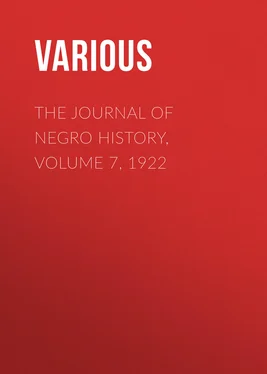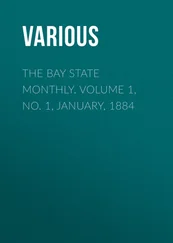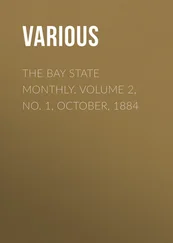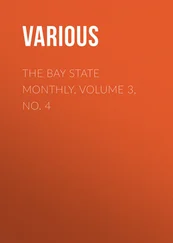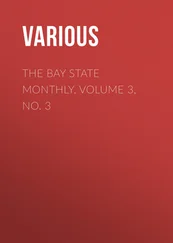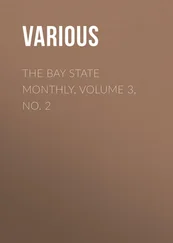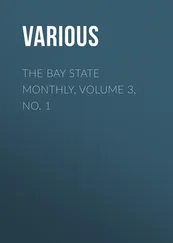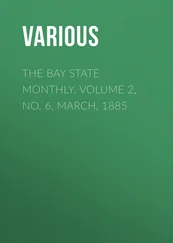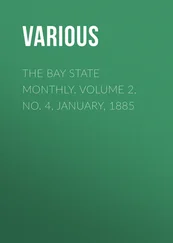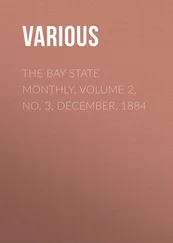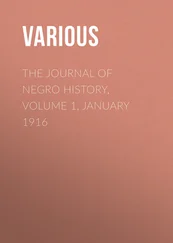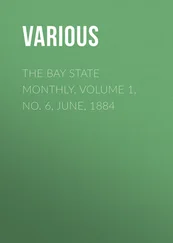Various - The Journal of Negro History, Volume 7, 1922
Здесь есть возможность читать онлайн «Various - The Journal of Negro History, Volume 7, 1922» — ознакомительный отрывок электронной книги совершенно бесплатно, а после прочтения отрывка купить полную версию. В некоторых случаях можно слушать аудио, скачать через торрент в формате fb2 и присутствует краткое содержание. Жанр: foreign_antique, periodic, История, foreign_edu, на английском языке. Описание произведения, (предисловие) а так же отзывы посетителей доступны на портале библиотеки ЛибКат.
- Название:The Journal of Negro History, Volume 7, 1922
- Автор:
- Жанр:
- Год:неизвестен
- ISBN:нет данных
- Рейтинг книги:3 / 5. Голосов: 1
-
Избранное:Добавить в избранное
- Отзывы:
-
Ваша оценка:
- 60
- 1
- 2
- 3
- 4
- 5
The Journal of Negro History, Volume 7, 1922: краткое содержание, описание и аннотация
Предлагаем к чтению аннотацию, описание, краткое содержание или предисловие (зависит от того, что написал сам автор книги «The Journal of Negro History, Volume 7, 1922»). Если вы не нашли необходимую информацию о книге — напишите в комментариях, мы постараемся отыскать её.
The Journal of Negro History, Volume 7, 1922 — читать онлайн ознакомительный отрывок
Ниже представлен текст книги, разбитый по страницам. Система сохранения места последней прочитанной страницы, позволяет с удобством читать онлайн бесплатно книгу «The Journal of Negro History, Volume 7, 1922», без необходимости каждый раз заново искать на чём Вы остановились. Поставьте закладку, и сможете в любой момент перейти на страницу, на которой закончили чтение.
Интервал:
Закладка:
The desire for a new edifice increased, and the people contributed liberally. At the time of the suspension of the Freedmen's Bank in 1874 the church had on deposit $2,500. The effect of the failure of the bank was most disastrous. There was a cessation of effort for a time, but under the magnetic and masterly leadership of Rev. Mr. Brown the people rallied, and $624 was collected in one day toward the new building. The time had come for a forward movement. The members were called together March 24, 1875. The question of rebuilding was discussed thoroughly and with but ten dissenting votes the proposition was endorsed and the trustees, thus empowered, undertook the purchase of a lot on Twenty-ninth Street, between Dunbarton and O Streets, from Mr. Alfred Pope, one of their number, for $25.
The work on the new edifice was begun. Meanwhile Rev. Mr. Brown was reappointed and the cornerstone was laid, the ceremony being performed by the Good Samaritans. Then came Rev. R. A. Read, who subsequently became pastor at Asbury. Rev. James Dansbury followed Mr. Brown and gave a good account of himself. In 1880 Rev. James D. S. Hall, an eloquent preacher, who had done very creditable work in different parts of the country and who had served successfully in the A. M. E. Church as well as in the M. E. Conferences, was appointed. His appointment was the signal for new life. The cornerstone was relaid, this time under the authority of the Masons. The next morning the building when only five feet high was discovered on fire. Dissatisfaction crept in the flock, lawsuits followed, and there was formed a separate A. M. E. body, with Rev. James T. Morris as its first pastor. Mt. Zion kept on nevertheless, and the first services were held in the new structure October 30, 1880, although the building was without roof or plaster. The subsequent history of Mt. Zion until the close of the nineteenth century was notable for its steady progress.
64
In 1869 a bill passed both houses of Congress to transfer the authority of the separate management of the Negro schools to the white board. The colored people became alarmed. Israel Church opened its doors for a mass meeting and under the leadership of John F. Cook a strong protest against the legislation was voiced. The other churches were asked to follow and endorse the stand taken at Israel. They did so; the President, Andrew Johnson, refused to sign the bill and the schools remained intact under Negro management until 1900.
65
Israel was the church above all which made itself an example for other independent churches in Washington. Mt. Zion in Georgetown had been acting as an organized church since 1816. Until 1830, however, it had no records. It had no Negro pastor for forty-eight years and no trustees until 1866.
66
Payne, History of the A. M. E. Church , p. 38.
67
Some of the strongest men in that denomination were sent to Israel. Charles Wesley Fitzhugh, Charles H. Phillips, R. S. Williams, N. S. Cleaves, and S. B. Wallace were among the number. Phillips, Williams, and Cleaves became bishops, while Dr. Wallace, who died while pastor in 1895, was certainly one of the foremost pulpit orators in any of the Negro churches, without exception, during the nineteenth century.
68
From the records of this church.
69
At this time there were eighteen classes at the Asbury and a membership of about 640. A financial report for the year ending March 30, 1850, shows receipts of $829.17½. Ten years later the stewards' financial report gives $798.01. At the dedication of Asbury in 1869 a review of its history was given by Benjamin McCoy, who was the most influential personage in the history of this church. He was a colleague of John F. Cook, Sr. An extract from a report submitted by him is very interesting, showing for the building the amount of the debt of the old Asbury, $15,354.97, on which $11,610.97 was paid Downing and Brothers, $3,744 to Rogers and Cissil, $1,257.48 paid to Morsell and Dearing, leaving a balance of $2,486.52.
70
The order then follows: W. H. Waters, 1856; John J. Herbert, 1857; Michael F. Sluy, 1858; Alexander W. Wayman, 1859; Daniel W. Moore, 1860-1861; James A. Handy, 1864 (6 weeks); James D. S. Hall, 1864, 1865; James A. Handy, 1866, 1867; Richard A. Hall, 1868, 1869; Daniel P. Seaton, M.D., 1870, 1871; Daniel Draper, 1872, 1873; Richard A. Hall, 1874; Joseph S. Thompson, 1875, 1876; George W. Brodie, 1877, 1878, 1879; Rev. John W. Stevenson, 1880, 1881.
Union Bethel finally became the Metropolitan Church in 1881. James A. Handy served in 1882, 1883, 1884; after which came Rev. George T. Watkins, 1885; Theophilus G. Steward in 1886 and 1887, and John T. Mitchell in 1888 and 1889.
71
The organization of the Bethel Literary and Historical Association by Bishop Payne in the early autumn of 1881 was an event worth chronicling because of its immediate influence on the individual church, the community, the denomination and the entire country. For twenty-five years the Bethel Literary in the fall and winter seasons was recognized as an intellectual clearing house. In distant communities the reflex influence was just as unmistakable because of the newspapers, whose Washington correspondents did not fail to register the utterances and the discussions which the Literary occasioned.
72
Union Bethel became the Metropolitan A. M. E. Church by order of the General Conference of 1872, affirmed by that of 1876 and reaffirmed by its successor in 1880.
The church building is 80 x 120 with a sub-basement for domestic purposes and a basement above grade containing lecture, Sunday School, library, and class rooms. The cost was $70,000 on ground, the assessed valuation of which at the time of the erection of the edifice was $25,000. The cornerstone was laid in 1881. The basement was opened for divine worship November 8, 1885, and dedicated by Bishop A. W. Nayman, Dr. J. A. Handy, Dr. B. W. Arnett, and Dr. G. T. Watkins, pastor. On the completion of the main auditorium services were first held Sunday, May 30, 1886. When dedication features extending one week took place, John A. Simms, Andrew Twine, William Beckett, John Shorter, George C. Brown, James Washington, Walter F. Hyson, George R. Dalley, and J. T. Harris were the trustees.
In 1886 the new edifice was dedicated with elaborate exercises. T. G. Steward was the first pastor to serve in the new building. After an administration of two years he was succeeded by Dr. John G. Mitchell. John W. Beckett followed Dr. Mitchell in 1889 and remained three years. In 1873 John T. Jenifer, who bears the distinction of being a member of the first graduating class of Wilberforce University, was appointed and served three years. He was succeeded in 1896 by John Albert Johnson, who served a term of five years with unusual success. Daniel J. Hill followed J. Albert Johnson and remained two years. Oscar J. W. Scott, who followed in 1903, filled out three terms and was serving his fourth when he received an appointment as Chaplain in the 24th United States Infantry to succeed Chaplain T. G. Steward. John H. Welch, named to succeed J. W. Scott, served two years and was appointed for the third when he suddenly passed away to the intense sorrow of his congregation. Dr. Isaac N. Ross began in 1909 an incumbency of five years.
In 1914 Dr. C. Harold Stepteau succeeded Dr. Ross and remained for three years. Dr. Stepteau was succeeded in 1917 by Rev. Carlton M. Tanner. He at once bent his efforts toward the reduction of the debt which had handicapped the progress of the church for a generation. Such was his success that within two years he accomplished what had been regarded as an impossible task. The event was made an occasion for great rejoicing, culminating in a thanksgiving service Monday evening, January 27, 1919, which included among other features an address by the pastor, Dr. Tanner, one by the presiding Bishop, John Albert Johnson, and an original poem by Dr. Robert E. Ford. The most spectacular number was the burning of the fourteen thousand dollar mortgage deed in the presence of the vast audience, the taper being applied by a committee of elderly members who had been connected with the church for a score or more of years.
Читать дальшеИнтервал:
Закладка:
Похожие книги на «The Journal of Negro History, Volume 7, 1922»
Представляем Вашему вниманию похожие книги на «The Journal of Negro History, Volume 7, 1922» списком для выбора. Мы отобрали схожую по названию и смыслу литературу в надежде предоставить читателям больше вариантов отыскать новые, интересные, ещё непрочитанные произведения.
Обсуждение, отзывы о книге «The Journal of Negro History, Volume 7, 1922» и просто собственные мнения читателей. Оставьте ваши комментарии, напишите, что Вы думаете о произведении, его смысле или главных героях. Укажите что конкретно понравилось, а что нет, и почему Вы так считаете.
